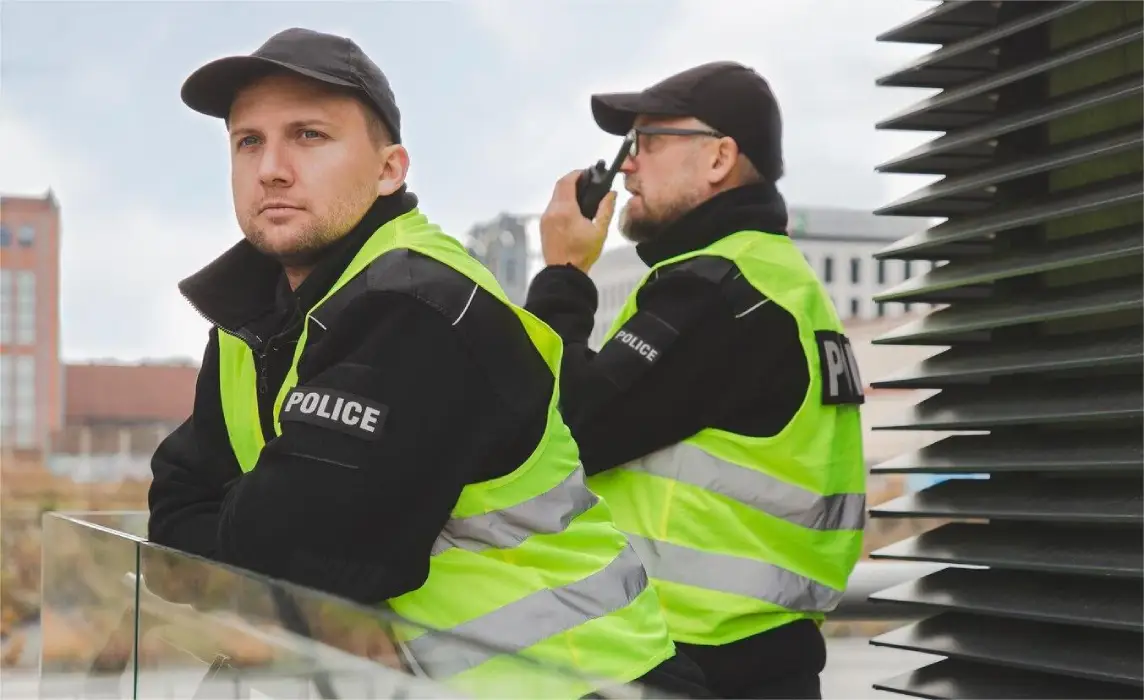
CCTV Licence If I Work in a Retail Supermarket
By London Security College Is Your Licence Near to Expire? SIA Refresher Training + First
SIA Refresher Training + First Aid– Keep Your Licence Active! Only £199
In the fast-paced and often unpredictable world of security, being prepared for any situation is critical. One of the most essential skills a security officer can possess is performing basic first aid. Emergencies are often chaotic and time-sensitive, and knowing what to do in those critical first moments can be the difference between life and death. This is where the DR ABC code comes in—a straightforward yet powerful acronym that every security officer should know.
The DR ABC code is a systematic approach to assessing and managing casualties in an emergency. It is a fundamental part of first aid training and helps ensure that no critical steps are missed when attending to an injured or ill person. DR ABC stands for:
D – Danger: The first step is to check for danger to yourself, the casualty, and others. Before rushing to assist, ensuring the environment is safe is essential. This could involve assessing risks like traffic, fire, hazardous materials, or potential violence. If the situation is unsafe, you should not approach until the danger is mitigated, as your safety is paramount. This step prevents further harm and enables you to manage the situation without adding more casualties.
R – Response: Once the scene is safe, check if the casualty is responsive. Approach them, speak loudly, and ask, “Are you alright?” Gently shake their shoulders to see if they react. This step helps you determine the level of consciousness of the casualty. If they respond, they are conscious and may be able to tell you what happened or how they feel. If there is no response, the situation is more serious, and you need to proceed quickly to the next steps.
A – Airway: Ensuring the airway is transparent and open is the next priority. An unconscious person may have their airway blocked by their tongue or foreign objects. To open the airway, tilt the head back and lift the chin. This manoeuvre pulls the tongue away from the back of the throat, allowing air to pass into the lungs. If there are visible obstructions in the mouth, carefully remove them, but be cautious not to push anything further into the airway.
B – Breathing: After securing the airway, check if the casualty is breathing normally. This involves looking for chest movements, listening for breath sounds, and feeling for air on your cheek. This check should last no more than 10 seconds. If the casualty is not breathing or their breathing is irregular (such as gasping), this indicates a severe problem, and you need to start CPR immediately. Normal breathing is a good sign but prepare to act quickly if there’s any doubt.
C – Circulation: Lastly, check for signs of circulation, which include movement, coughing, or normal breathing. If there are no signs of circulation, or if the casualty is not breathing, you should begin CPR and call emergency services without delay. This step is crucial as it directly addresses the heart’s ability to pump blood around the body, delivering oxygen to vital organs. In some situations, you may also need to check for and control severe bleeding or other life-threatening conditions.
Security officers are often the first responders in various emergencies. Whether it’s a medical emergency, an accident, or an assault, the ability to quickly and effectively apply the DR ABC code can significantly affect the outcome of the casualty.
In any emergency, time is critical. The DR ABC code provides a structured approach that helps security officers assess the situation rapidly and take the necessary steps without hesitation. This methodical process ensures that nothing is overlooked and that each aspect of the casualty’s condition is addressed correctly. Rapid and correct application of this code can stabilise a casualty and buy precious time until professional medical help arrives.
The first step in the DR ABC code—Danger—is particularly important for security officers, who may often be required to enter potentially hazardous situations. Assessing the environment for dangers protects you and prevents further harm to the casualty and others nearby. For instance, a security officer might need to secure the area, such as stopping traffic or removing threats, before beginning first aid. This proactive approach ensures that the scene is safe for everyone involved.
Emergencies are stressful, and the pressure to act quickly can lead to mistakes. Knowing the DR ABC code inside out can give security officers the confidence to act decisively. This confidence is invaluable; it helps ensure that actions are taken swiftly and correctly, reducing the likelihood of panic or uncertainty. This calm collected approach benefits not only the casualty but also the officer, who can perform their duties with assurance.
‘R’ stands for Response. In this step, you assess whether the casualty is conscious and responsive. This is done by verbally addressing the person and gently shaking them. If they respond, it provides valuable information about their condition, such as whether they can breathe independently or require further medical assistance. Lack of response indicates a more severe situation, where immediate action is necessary to maintain the casualty’s life.
During the Response stage, when you check for breathing, the assessment should take no more than 10 seconds. This short window is critical because delays can impact the casualty’s survival, especially if they are not breathing or breathing abnormally. You’re looking for clear signs of life—chest movement, sound of breaths, or feeling breath on your cheek. If you’re uncertain or there are no signs of normal breathing, you should proceed with CPR immediately to maintain the circulation of oxygenated blood to vital organs.
Personal Protective Equipment (PPE), such as gloves and masks, should be applied during the danger stage. PPE is vital for protecting yourself from exposure to blood, bodily fluids, or other hazardous materials. Applying PPE at the beginning ensures that you are protected before you make any physical contact with the casualty. This step is particularly important in situations involving unknown hazards or injuries that may involve significant blood loss or other contaminants.
Checking the airway is crucial because an obstructed airway can prevent oxygen from reaching the lungs and, consequently, the brain and other vital organs. In unconscious casualties, the tongue is the most common cause of airway obstruction. By tilting the head back and lifting the chin, you ensure the airway remains open, allowing the casualty to breathe. This step can be the difference between life and death, as even a few minutes without oxygen can lead to severe brain damage or death.
If the casualty is not breathing or their breathing is abnormal (e.g., irregular, shallow, or gasping), you should begin CPR immediately. CPR helps maintain circulation and oxygenation of the blood when the heart has stopped beating or is not functioning effectively. Start with 30 chest compressions followed by two rescue breaths and continue this cycle until professional medical help arrives or the casualty begins to breathe normally again. Prompt action in this stage is vital to increase the chances of survival.
The DR ABC code is an important tool for security officers, enabling them to manage emergencies with efficiency and effectiveness. By mastering this code, security personnel can ensure they are prepared to handle critical situations, protect themselves and others, and potentially save lives. Whether you are a seasoned security officer or new to the field, understanding and practising the DR ABC code is a fundamental part of your role in maintaining safety and security. The knowledge and confidence gained from this training can make all the difference when it matters most.

By London Security College Is Your Licence Near to Expire? SIA Refresher Training + First

By London Security College Is Your Licence Near to Expire? SIA Refresher Training + First

By London Security College Is Your Licence Near to Expire? SIA Refresher Training + First

By London Security College Is Your Licence Near to Expire? SIA Refresher Training + First
London| Birmingham| Manchester | Leeds | Glasgow | Sheffield
London Security College is the leading supplier of SIA Licence courses in London. We excel in SIA Courses such as SIA Door Supervisor Course, SIA Top Up Training, SIA CCTV Surveillance Course, First Aid Courses, Traffic Marshal Banksman Course Online, and Forklift Training Course.
“It is impossible for a man to learn what he thinks he already knows”
London Security College
International House,
24 Holborn Viaduct,
London, EC1A 2BN
020 8050 4108
Copyright © LONDON SECURITY COLLEGE is a training and hiring platform

Fill in the form below
3 thoughts on “DR ABC Code”
Clear and essential first aid guide.
Is DR ABC training included in the Emergency First Aid course?
Yes, it is included